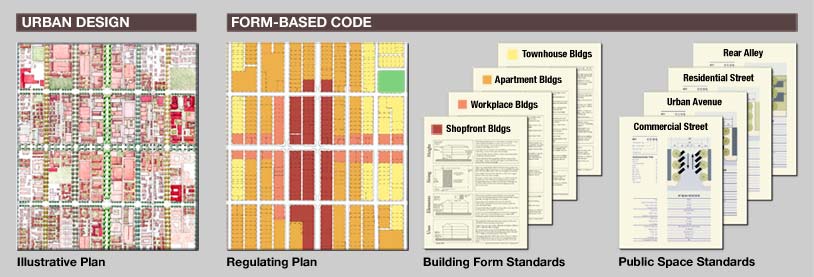Yukon has approved a new form-based code, and Stillwater and Norman may be the next communities to adopt a new type of development regulation.
Form-based codes are an emerging type of development regulations that focus primarily on the character of urban form in a community. Conventional single-use zoning has separated land uses and prevented the development of walkable neighborhoods for decades.
Hundreds of cities have adopted form-based codes to encourage a new form of development, with specific guidance for the design of streets, public spaces, and buildings.

Tulsa’s Pearl District: Oklahoma’s First Form-Based Code
Tulsa was the first city to experiment with form-based codes with a 60-acre section of the Pearl District. The code has been a controversial subject with some neighborhood property owners, with a proposed expansion failing and some parcels asking to be removed from the code’s boundary.
Yukon’s Form-Based Code for New Development Area
On March 17, Yukon adopted a new 170-acre form-based code (pdf) that sets guidelines for block sizes, street types, trees, sidewalks, street-level retail, and other urban characteristics while allowing residential and commercial uses to exist in the same district. The code has been applied to an undeveloped greenfield area slated for redevelopment.
Stillwater and Norman Propose Form-Based Codes for Urban Infill Areas
Stillwater and Norman are both seeking to adopt form-based codes to guide redevelopment in historic central areas. Stillwater’s code (pdf) would apply to an area between downtown and the Oklahoma State University campus, and could be up for city council approval in April.
Norman’s code would apply to the area between downtown and the University of Oklahoma campus, including Campus Corner. Planners hope that the code will preserve housing diversity in the area.

Form-based codes encourage vertical strip malls with overpriced housing and low-wage retail….yay?